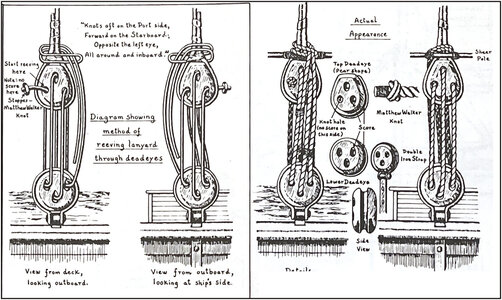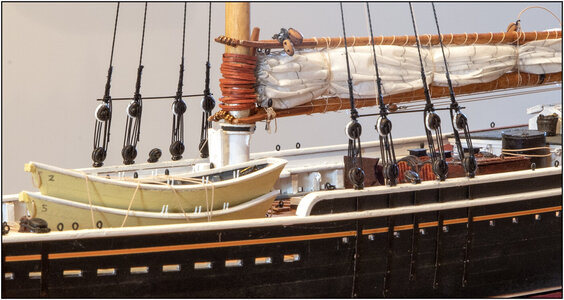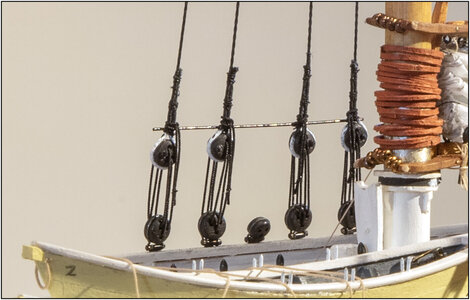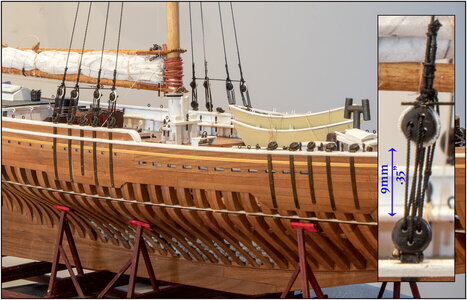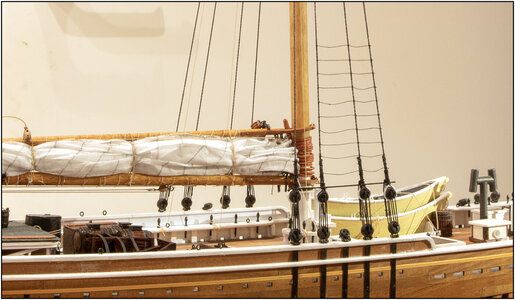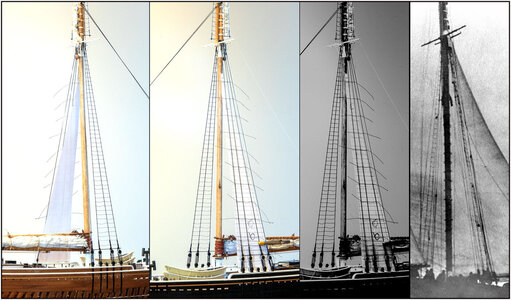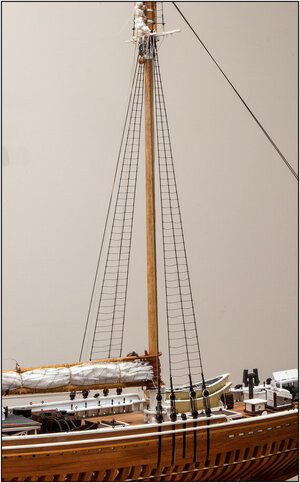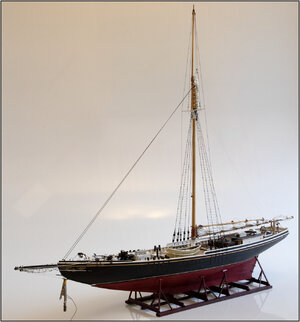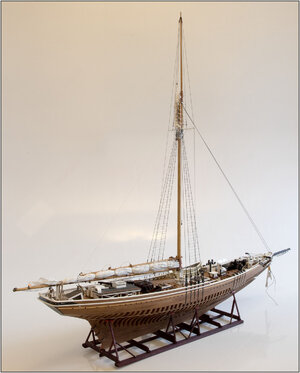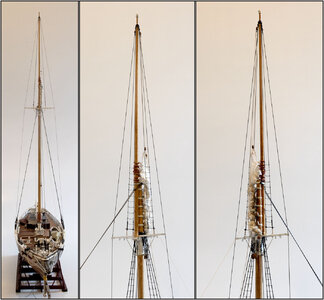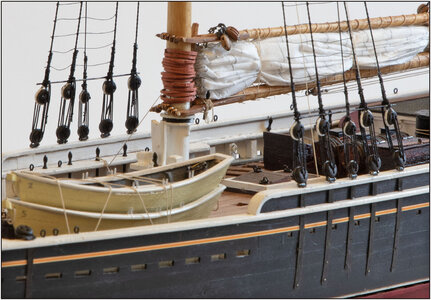The next step is to apply the 'shoe' at the bottom of most of the keel. As show on the drawings in the Saga-book.
It protects against damaging the lower keel bar. The planks are secured with trennels in the keel.
I couldn't find in the book "Bluenose II, Saga of the Great Fishing Schooners" by L.B. Jenson what the length of the keel bars was. The planks for the hull are between 25 and 30 feet. That's between 7.6 and 9.1 meters. My estimate for the shoe is that they were a bit shorter In case of damage, a large shelf did not have to be replaced.
To make the little trennels I have seen different techniques pass by on the forum.
I've been in touch to order a Byrnes Drawplate to try to make them myself.
It’s not delivered yet. So, started with toothpicks.
After first some test pieces with different diameter drills, eventually hatched on the drilling of 0.7mm holes.
Started in the recess for the rudder and then to the point forward.
Because for me this is a new technique, the first 2 pieces are edited in 2 ways.
View attachment 206006
A loose piece of 7.5 x 4.5 mm, containing 5 toothpicks. When dried cut off, sand and glue to the keel.
View attachment 206007
A piece of 2.5 x 4.5mm glued on the keel. After drying 2 holes drilled and glued in 2 toothpicks. After drying cut off and sanded.
View attachment 206008
Fitted on the keel, sanded and polished.
Mwa ……. Not bad for my first attempt.
After this 1st experience decided to mark the holes with a needle on the lat for the next piece of shoe, drill the holes and glue to the keel.
You can see it in the picture. To distribute the pressure and prevent damage on the shoe lat, put an extra bar on it.
Then the next step is to drill deeper so that the glued toothpicks also connected to the keel.
Regards, Peter

 ).
). ).
).



